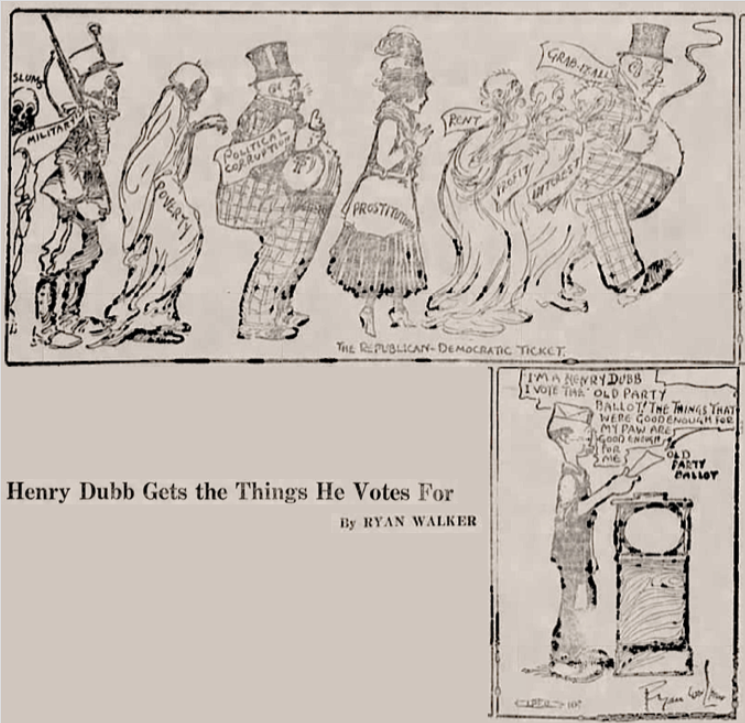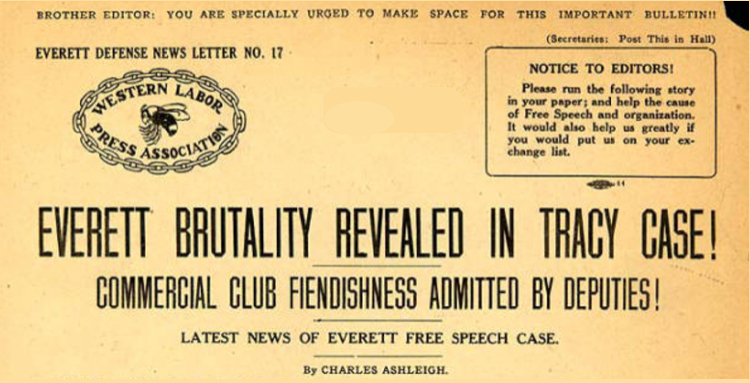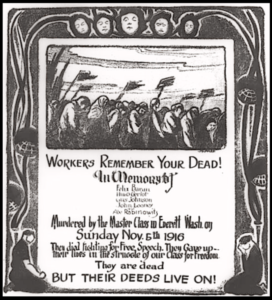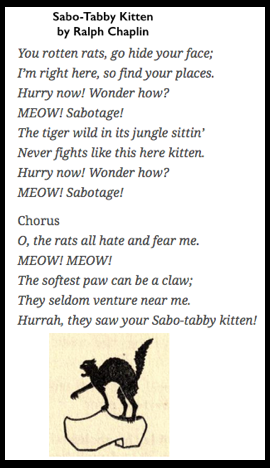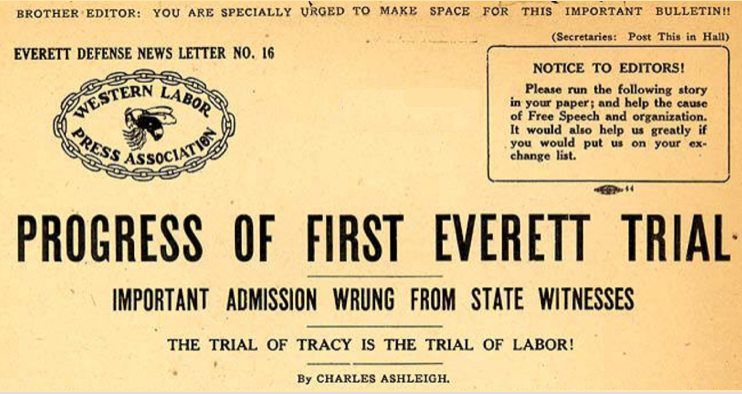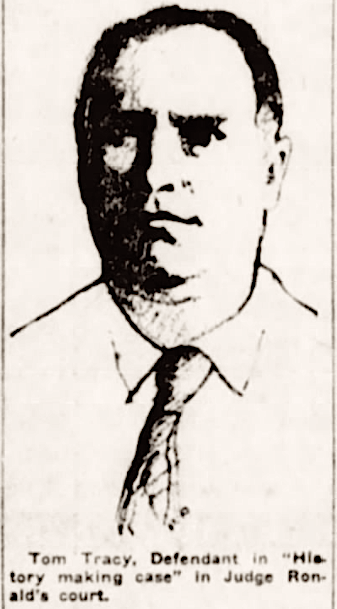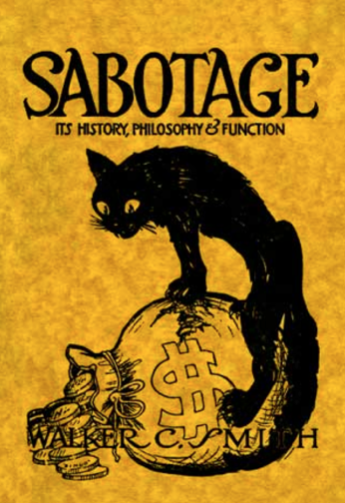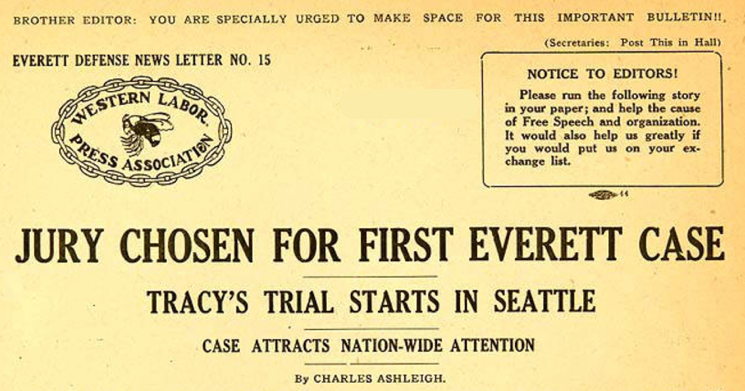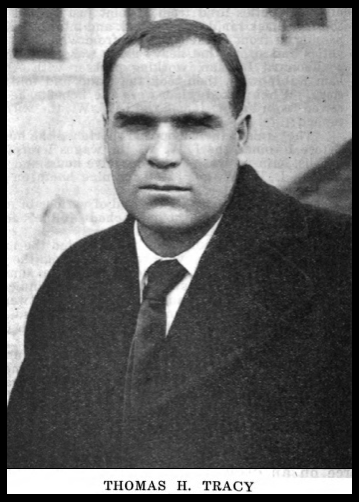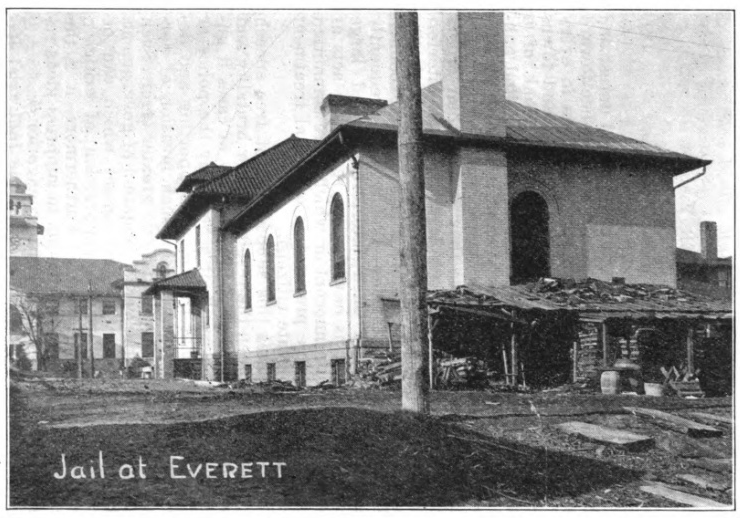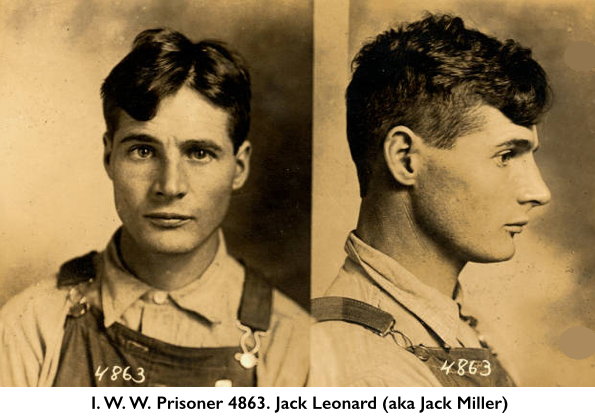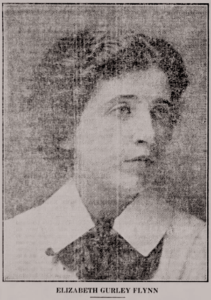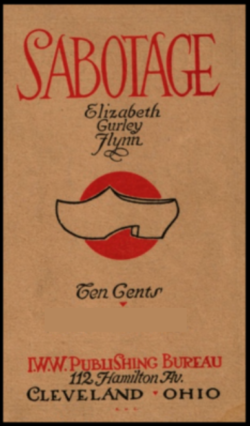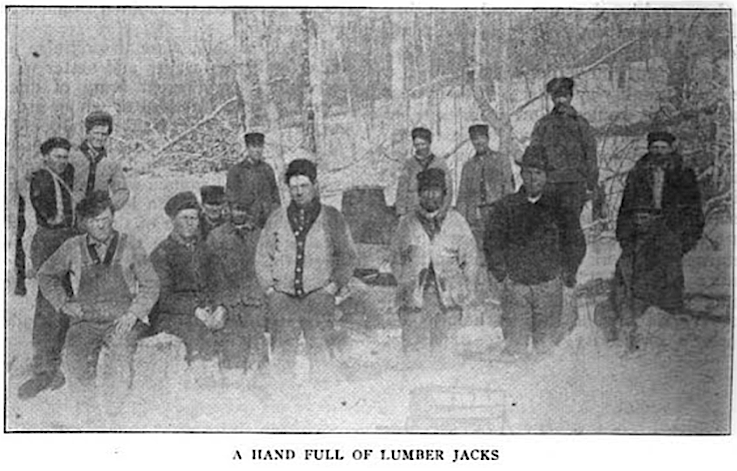You ought to be out raising hell.
This is the fighting age.
Put on your fighting clothes.
-Mother Jones
~~~~~~~~~~~~~~~~~~~~~~~~~~~~~~~~~~~~~~~~~~~~~
Hellraisers Journal, Tuesday March 6, 1917
Seattle, Washington – Tracy Proudly Displays His I. W. W. Button

As the trial of our Class-War Hero, Tom Tracy, gets underway in Seattle, a reporter for The Seattle Star describes the Fellow Worker:
Tracy, the defendant,…is a young-looking, heavy-set man, in a blue flannel shirt and red tie, with his I. W. W. button in evidence on his coat lapel.
He told reporters before the trial began that he is 36 years old, was born in Nebraska, and has done road construction work principally, in several Western states. He watched the slow progress of drawing and examining jurors with evident interest, but with an air of detachment.
From The Seattle Star of March 5, 1917:
I.W.W. TRIAL OPENS WITH
FIGHT ON JURY
—–
BY MABEL ABBOTT
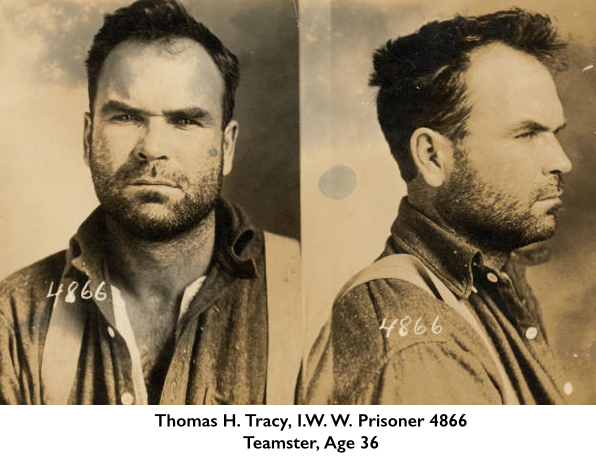
The first of 74 I. W. W. murder trials resulting from the riots in Everett, November 5, 1916, got under way before Judge Ronald Monday.
After an hour and a half of examination as to whether he is an I. W. W., whether he is a member of the Employers’ association, what newspapers he reads, and whether he forms his opinions upon what they contain, J. H. Hicks, 5225 15th ave, N. E., proprietor of Hicks’ cafeteria, was challenged for cause Monday morning by Attorney George Vanderveer, representing Thomas H. Tracy, I. W. W.. on trial for participation in the shooting of Deputy Sheriff Jefferson Beard, at Everett, November 5, and excused by Judge Ronald from sitting in the case.
If examination of jurors proceeds at the same rate, with even a reasonable number of challenges, the selection of the jury will take two or three days, at least.
Tracy is the first of the 74 I. W. W. charged with first degree murder, to be tried. All have asked for separate trials.
Important Fight
The setting of the big fight indicates that it will rank in importance with the McNamara dynamiting trial in Los Angeles and the Ettor and Giovanitti trials in Lawrence, Mass.
Among the array of lawyers in the court room when the trial opened, were A. L. Veitch, of Los Angeles, who is credited with the convictions of the McNamaras, who assists the prosecution in the present case, and Fred H. Moore, also of Los Angeles, who defended Ettor.
The state is also represented by Prosecutor Black, of Snohomish county, and H. D. Cooley, of Everett. For the defense, besides Moore, are George H. Vanderveer. O. N Hilton, of Denver, and C. E. S. Wood, of Portland.
Tracy Wears I. W. W Button
Tracy, the defendant, who sits behind this legal battery, is a young-looking, heavy-set man, in a blue flannel shirt and red tie, with his I. W. W. button in evidence on his coat lapel.
He told reporters before the trial began that he is 36 years old, was born in Nebraska, and has done road construction work principally, in several Western states. He watched the slow progress of drawing and examining jurors with evident interest, but with an air of detachment.
Continue reading “Hellraisers Journal: Trial of I. W. W. Class-War Prisoner Thomas H. Tracy Begins in Seattle, Washington” →
